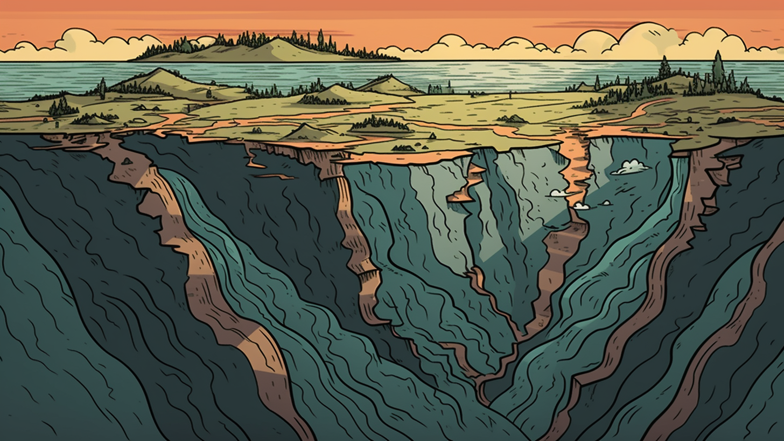The Dynamic Connection Between Tectonics and Earthquakes: Uncovering the Secrets of Our Shifting Earth

Tectonic plates are the large, moving pieces of the earth's crust. They float on top of the molten mantle layer beneath them. Their movements are what cause earthquakes. Tectonic plates meet at various points, forming boundaries. There are three types of tectonic boundaries: divergent, convergent, and transform.
Divergent boundaries are where two plates move away from each other. This creates a gap, or a rift, in the earth's crust. Magma rises from the mantle to fill this gap, creating new crust. This process is known as seafloor spreading. Divergent boundaries are found in the middle of the ocean, such as the Mid-Atlantic Ridge.
Convergent boundaries are where two plates collide. This collision can create three different types of boundaries: oceanic-oceanic, oceanic-continental, or continental-continental. Oceanic-oceanic boundaries occur when two oceanic plates collide. One of the plates is forced under the other, forming a subduction zone. This subduction creates a deep trench and can cause volcanoes to form.
Oceanic-continental boundaries occur when an oceanic plate collides with a continental plate. This results in the oceanic plate being forced under the continental plate. This process can create mountain ranges, such as the Andes in South America.
Continental-continental boundaries occur when two continental plates collide. As neither plate can be forced under the other, they push up against each other, creating large mountains. The Himalayan mountain range in Asia is an example of this type of boundary.
Transform boundaries occur when two plates slide past each other. This can create earthquakes but usually doesn't result in volcanoes or subduction.
Now that we understand tectonic boundaries, we can delve deeper into earthquakes. Earthquakes can occur at any tectonic boundary, but they are most common at convergent and transform boundaries. When two plates collide, enormous amounts of energy are generated. This energy is released in the form of seismic waves, which cause the ground to shake.
There are two main types of seismic waves: body waves and surface waves. Body waves are the fastest and can travel through the earth's interior. There are two types of body waves: primary (P-waves) and secondary (S-waves). P-waves are longitudinal waves that travel through the earth's interior. They move quickly and can travel through both solid and liquid materials. S-waves are transverse waves that only travel through solids. They are slower than P-waves but still faster than surface waves.
Surface waves travel along the earth's surface and are slower than body waves. They are the waves that we feel during an earthquake and are responsible for most of the damage. There are two types of surface waves: Love waves and Rayleigh waves. Love waves move side-to-side, while Rayleigh waves move up-and-down and side-to-side.
Scientists use seismographs to measure seismic waves. Seismographs detect ground motion and record it on a seismogram. Seismograms show the arrival times of different types of seismic waves, which can help scientists locate the epicenter (the point on the earth's surface directly above the origin of the earthquake).
Earthquakes can have devastating effects on humans and the environment. They can cause landslides, tsunamis, and even trigger other natural disasters. Scientists are constantly monitoring seismic activity to try and predict when earthquakes will occur. While we cannot stop earthquakes from happening, we can take steps to mitigate their effects.
Building codes can be improved to ensure that buildings are earthquake-resistant. Evacuation plans should be in place to help people escape areas that are at risk of an earthquake. Tsunami warning systems can help give people time to get to safety in the event of a large earthquake.
In conclusion, the relationship between tectonic activity and earthquakes is complex and fascinating. Understanding the movements of our shifting earth can help us prepare for and mitigate the effects of earthquakes. Through examining seismic events and other geological phenomena, we can uncover the hidden secrets of our planet's dynamic nature.
Comments
Post a Comment